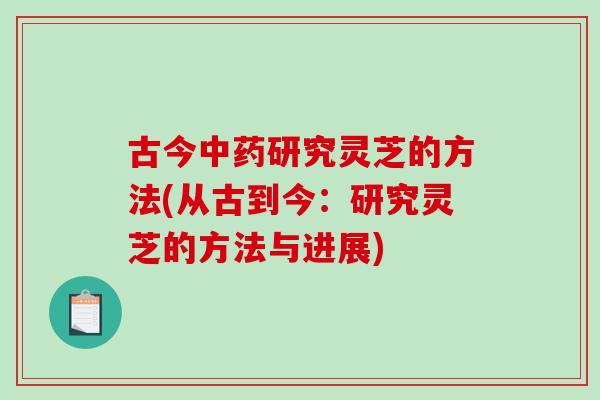Introduction
For thousands of years, traditional Chinese medicine has used Ganoderma lucidum, commonly known as the Lingzhi mushroom, for its medicinal properties. With the advancement of modern technology, researchers and scientists have been able to study the mushroom's chemical composition and physiological effects more thoroughly. This article will explore the methods and progress of Ganoderma lucidum research, from ancient to modern times.
Ancient Methods of Researching Lingzhi
Ancient Chinese medicine practitioners used a variety of methods to study and utilize the Lingzhi mushroom. These included visual observations of the mushroom's physical characteristics, taste, and aroma, as well as recording the effects it had on the human body. The earliest known written record of Ganoderma lucidum is in the Shen Nong Ben Cao Jing, a Chinese pharmacological text from the Han Dynasty. The text describes the Lingzhi mushroom as having a bitter taste and being beneficial for the heart, liver, and kidneys.
Traditional Chinese Medicine Research on Lingzhi
As the use of Lingzhi in traditional Chinese medicine continued, more research was conducted to study its effects on the human body. One of the primary methods used was through clinical observation of patients taking Ganoderma lucidum supplements. Practitioners would monitor their patients and note any improvements in their health conditions. In addition, Lingzhi was often combined with other herbs and ingredients to create a more effective treatment for various ailments. Traditional Chinese medicine practitioners also used Lingzhi in acupuncture treatments or as a topical ointment for skin conditions.
Modern Scientific Methods of Researching Lingzhi
With advancements in technology and modern scientific methods, researchers have been able to study Lingzhi on a molecular level. Scientists have identified over 400 biologically active compounds in Ganoderma lucidum, including polysaccharides, triterpenes, and polyphenols. Researchers have used various techniques to isolate and characterize these compounds, including chromatography and mass spectrometry. In addition, animal and human studies have been conducted to determine the medicinal properties and potential clinical applications of Lingzhi. These studies have shown promising results, and Lingzhi is being investigated as a potential treatment for cancer, inflammation, and cardiovascular diseases.
Conclusion

The study of Ganoderma lucidum, or Lingzhi, has come a long way from its early descriptions in ancient Chinese pharmacological texts. Traditional Chinese medicine practitioners conducted clinical observations and utilized Lingzhi in various forms of treatment. Modern scientific methods have allowed researchers to identify the biologically active compounds in the mushroom and study it on a molecular level. Lingzhi's potential medicinal properties have sparked interest in its potential clinical applications, and its use in traditional Chinese medicine continues to evolve with new research.
在购买灵芝孢子粉的时候,一定要认准两方面:一必须要有国食健字号;二灵芝三萜含量尽量要高。因为没有国食健字号的灵芝孢子粉是不被食药监局认可的,也就是三无产品,这种产品吃下去只能适得其反。而灵芝三萜含量高则是因为灵芝三萜是灵芝孢子粉核心的成分,它越高服用效果就越好。比如这款芝素堂灵芝孢子粉,不仅具有国食健字号,其中的灵芝三萜含量还是业内领先的,效果好且安全有保障。







